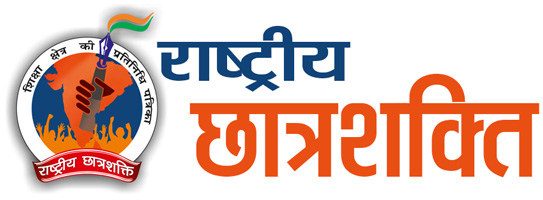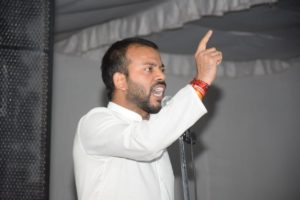“The Minister was arrogant and dismissive of our delegation when we presented our demands”, said a dejected Javed Abidi after a futile meeting with the then Minister of Human Resource Development Kapil Sibal in 2009, around the time when the Right to Education Bill was due to be introduced by the UPA government. Javed Abidi, who passed away in 2018, founded the Disability Rights Group (DRG), and had served as the director of the National Centre for Promotion of Employment for Disabled People. The issues in the bill that they presented included the definition of school as it was silent on the definition of special school and the infrastructure required for the special school. If it had not been for the determined struggle by the likes of Abidi against the non-inclusion of non-physical disabilities such as Autism and Cerebral Palsy, 20 million children would have been automatically excluded from the purview of the proposed legislation.
The disabled-friendly provisions enumerated in the National Education Policy 2020 are a far cry from the indifference of the previous regime to the education related concerns of the disabled community in India, totalling around 2.21% of the country’s total population according to the 2011 census. According to the latest Unified District Information on School Education (U-DISE) data, while the children with disabilities have a mere 1.1% representation at the primary level of education, it drops to around 0.5% at the secondary (Class X) level. One cannot even hazard a guess about the abysmal depths to which it might be falling at the level of higher education.
The first formal mention of the concept of what is popularly known as ‘inclusive education’ today was done in the National Policy on Education, 1986 (amended in 1992) in the form of ‘integrated education’. Inclusive education today, means including students with disabilities in a mainstream school environment. The framework for ‘integrated education’ was provided by the Rehabilitation Council of India Act, 1992 whose main objective was the development of professional cadres of educators in respect of students with special needs. The next big milestone for India’s disabled community came with the National Policy for Persons with Disabilities, 2006, after which, the term ‘inclusive education’ was adopted, thus, broadening the scope of the concept of integrated education. However, the real efforts towards institutionalising inclusive education began only after the operationalisation of the Sarva Shiksha Abhiyan (SSA) in 2000-2001. It was only due to the SSA’s focus on the universalisation of elementary education, that early identification, education placement, aids and appliances, teacher training, individual education plans with special focus on girls were incorporated as policy goals in respect of the children with disabilities.
The National Education Policy 2020 focuses on barrier-free education, training of special educators by imparting extensive knowledge, the harmonisation and standardisation of sign language for the hearing impaired students with a heavy focus on using technology for better learning outcomes. While Chapter 6 of Part I of the NEP 2020 titled ‘Equitable and Inclusive Education : Learning for All’ enumerates special measures to be adopted in respect of school education, Chapter 14 titled ‘Equity and Inclusion in Higher Education’ stipulates necessary adjustments to education beyond the secondary level.
NEP 2020 is very strategic in its language. While it does not talk about any pre-existing social categories like class, tribe, and so on, the only pre-existing category that finds a mention in the policy document is ‘Persons With Disabilities’ (PWD). Even though the policy has created a new vocabulary, namely, SEDGs or Socially and Economically Disadvantaged Groups, Persons With Disabilities have been recognised as a separate category altogether, implying that they deserve special and sincere attention from the authorities. Besides, the policy holds out the promise of implementing education-centric provisions of the Rights of Persons with Disabilities (RPWD) Act, 2016 and introducing necessary amendments to the Right to Education Act to bring more relief to the disabled community.
While the children with disabilities will have equal chances of participating in all school and extra-curricular activities along with other children in an inclusive environment, the training of Special Teachers to achieve this noble objective has also been made a major focus area of the policy.Teachers already in service will get an option to pursue a 1-year certificate course in case they desire to move to the field of special education. New pedagogical methods will be developed to handle the educational requirements of children with special needs in the proposed 4-year Bachelor of Education programme which will be offered by Multidisciplinary Education and Research Universities, or MERUs. Such an arrangement will eliminate duplication of efforts and wastage of precious resources by helping to do away with stratified training programmes. No longer would the Special Teachers for the visually impaired students would have to be trained exclusively at the National Institute for the Empowerment of Persons with Visual Disabilities and those for the hearing impaired students at the National Institute of Speech and Hearing Disabilities, both of which are autonomous organisations under the Ministry of Social Justice and Empowerment. The NEP 2020 makes it incumbent upon the MERUs to develop expertise aligned with the educational needs of the disabled students.
While the policy promises an amendment to the Right to Education Act, 2009, a major concern of India’s disabled community regarding the National Education Policy 2020 is in respect of the absence of a clear timeline for that legislative correction along with similar unavailability of specified timeframes regarding the recruitment of sign language interpreters in schools. The RTE Act, 2009 still sources the definition of ‘Persons With Disabilities’ from the outdated Persons With Disabilities (Equal Opportunities, Protection of Rights and Full Participation) Act, 1995. India’s disabled community appears eager to incorporate the modern and updated definition specified in the Rights of Persons with Disabilities (RPWD) Act, 2016 to ensure the speedy implementation of the policy, thereby making educational institutes equally accessible to all. While sign language has been mentioned in the policy several times, with the stipulation that after the sixth grade, all students will have the option of learning the standardised Indian Sign Language, references to ‘Braille’ have been conspicuous by their absence. Braille has been mentioned only once, and that too, in the context of provision of appropriate study materials to the visually challenged students. The visually challenged segment from among the larger disabled community in India believes that by the virtue of Braille being a script, it can and should be taught as an additional skill to students at the level of higher education.
In conclusion, while the National Education Policy 2020 attempts to follow the DPSP enshrined under Article 41, which enjoins the state to make effective provisions for securing the right to work, to education and to public assistance in cases of disablement, a lot of work ranging from RTE amendment to the formulation of clear timelines needs to be done to ensure comprehensive equity of access and opportunity in education for our country’s disabled community.
The writer is the Media Co-Head of Akhil Bharatiya Vidyarthi Parishad (ABVP) Delhi.







